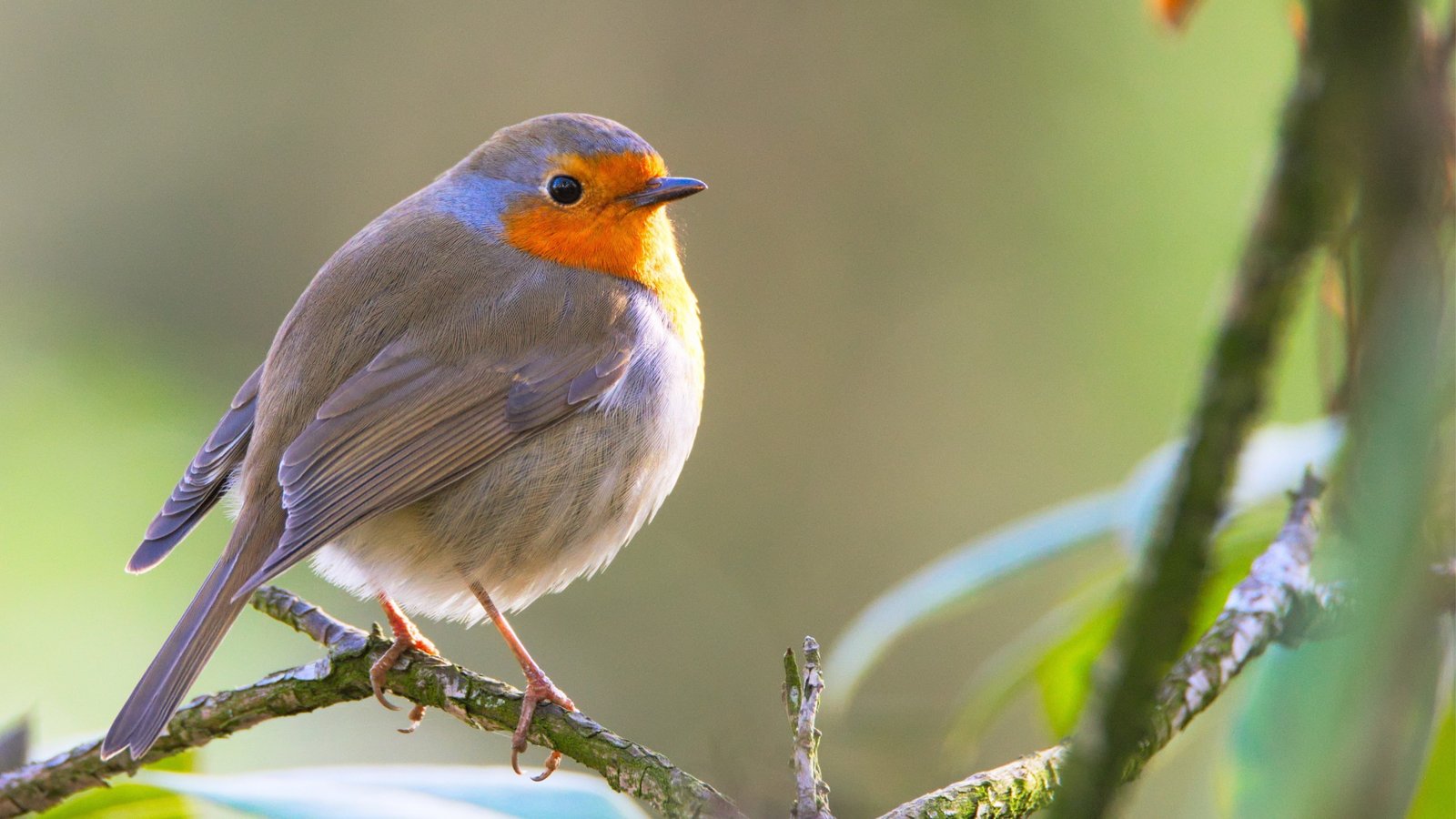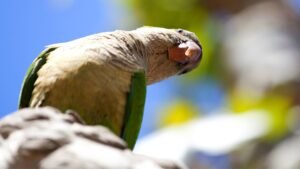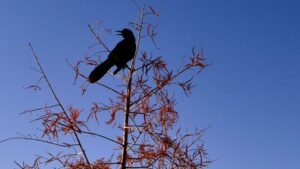If you have ever owned a bird as a pet, you have probably looked at your bird and wondered, “Do these guys pee?.” You are not alone in your thoughts. However, the answer to the question isn’t straightforward because it isn’t a simple yes or no answer.
You might have seen birds release white, watery droppings with some dark pieces in them. You aren’t completely wrong if you assume that those watery white droppings are bird poop. So, how do birds release the waste product of water which we obviously see them drink? We won’t draw this out any further; let’s jump right in. Read on!
Key Points
- Birds cannot hold in pee for long because they don’t have bladders
- The cloaca serves for both reproduction and digestion in birds
- The feces of birds can be potentially fatal for some mammals
Do Birds Pee?
If we want to answer this question technically, we would say that birds don’t pee. This is because they don’t urinate in the way that we have known and come to understand. Birds don’t have bladders to store their urine like mammals do. These avian creatures also have a very different anatomical makeup from most mammals.
If you understand that a bird’s body works differently from ours, you’d understand why you’ve never seen your bird releasing large streams of pee. However, birds do pee because they release uric acid along with their poop. Simply put, birds pee and poop simultaneously.
A Break Down Of Bird Waste Removal Anatomy
Most mammals remove waste in a pretty obvious way. The pee of mammals is usually in long streams and can be observed for the most part. This is because mammals have a urethra that runs from their bladder. So, mammals release pee from their urethra and out the opening of the urethra. Mammals also release feces through an entirely different process.
However, birds don’t have the same anatomy as mammals, so they release pee differently. In the next paragraph, we will explore the anatomy of our avian friends as it would help us understand why birds pee the way they do.
No Bladder, No Urethra, No Pee As We Know It
The liquid waste product isn’t stored long in the bodies of birds because they lack bladders. Birds are known to be incredibly lightweight, and their lightweight nature plays a huge role in how they can fly. If birds had to store pee in heavy bladders, it would affect their weight, automatically hindering their ability to fly.
So, where does their pee go if they don’t have bladders? We are glad you asked! Instead of bird pee being stored in a bladder, the pee goes straight from the kidney to the cloaca(we will talk about their cloaca very soon!).
So, when the cloaca gets a hold of all that pee, do you know what it does? It reabsorbs 98% of it right back into the Avian’s body. This eliminates any need for a bladder and also conserves water. This is one of the reasons why birds don’t drink as much water as mammals.
More About The Cloaca
We promised to talk more about the cloaca, so here it is; The cloaca plays one of the essential roles in the waste management department of a bird’s body. When the Kidney releases filtered water to it, the cloaca reabsorbs 98% of the water back into the bird’s body and sends the rest to be released alongside the poop.
The cloaca is an opening that connects three Avian body systems at once. It connects the digestive, reproductive and urinary systems of a bird. Urine and feces drain into the cloaca; they mix and are then released.
The cloaca also plays an important role during reproduction. During reproduction, it acts as an opening through which sperm is transferred from the male bird to the female.
Can Birds Pee And Fly At The Same Time?
Most birds can eliminate waste while flying, and many also do so before flying. You must have heard the rumor that goes like this; Pigeons fly with their legs closed, so they do not poop when airborne. And, if pigeons poop mid-air with their legs closed, they would cover their feet with excrement.
However, we have all been targets of poo from pigeons at one point, which dispels the myth that pigeons do not poop when airborne. So, birds such as pigeons poop when flying, and so do many others, such as seagulls, eagles, and owls.
Bird Pee: What Does It Look Like?
Most bird droppings are composed of a pasty, chalky-white colored part with darker substance specks. The pasty, white substance is the closest thing you’d get to know what bird pee looks like. But it hardly qualifies as a liquid, unlike mammals’ urine.
You should also know that bird pee may look a bit yellow if it’s exposed to sunlight. However, for the most part, bird pee is whitish. If you are keeping birds such as the monk Parakeet, avoid touching their pee and wash your hands if you do. This is because birds’ droppings can be highly toxic and may contain parasites that are harmful to mammals. The pee of birds has been known to contain salmonella and E. Coli.
Fatal Diseases Caused By Bird Pee and Poop
Did you know that Avians and their droppings can carry over sixty transmissible diseases? That number continues to grow. Below are some common diseases that can be gotten through the fecal matter of birds.
- St Louis Encephalitis
St Louis Encephalitis is a fatal disease caused by bird pee and poop. Some Avians that carry the disease are pigeons, household sparrows, and finches. St Louis Encephalitis can cause fevers and headaches and may lead to comas and death.
- Histoplasmosis
Histoplasmosis is a potentially deadly disease caused by bird pee/poop. People can get Histoplasmosis when inhaling the fungus spores found in bat and bird droppings. This disease will cause the affected person to have headaches and fevers. It will also spread to the nervous system and lungs.
- Bird Flu
The H5N1 virus, also known as “Avian influenza,” is spread through infected birds’ feces. This dangerous condition can survive in birds and items, including birdbaths, buildings, and feeds. The symptoms of this illness, which are more severe than those of regular flu viruses, include a high temperature, cough, respiratory problems, and muscle aches. Avian Influenza is well-known for being fatal in humans.
What Is The Frequency Of Bird Pee?
Mammals can hold in pee for a long time because we have bladders. Birds don’t have a bladder, so they cannot hold in pee for long periods. But chickens are an exception. Chickens can hold in pee longer than most of their avian counterpart.
Birds frequently pee because they process food and liquid very fast. You may also like to know that small birds get rid of waste faster than larger birds. So, a small pet parrot may need to pee more frequently than, let’s say, an Eagle. The time it takes for food to pass through the digestive tract of a bird is about 2.5 to 12 hours. Their short intestines also affect how frequently birds need to remove waste.
Since we are talking about waste elimination in birds, you will also like to know that birds don’t sweat. Birds lose water through breathing than even peeing or sweating.
FAQS
- How Do You Clean Bird Pee?
The easiest way to clean bird pee is by soaking an old rag in water and using it to remove droppings that are still wet. When you are done, toss the rag in a dustbin. Next, use a hose to flush the area where you removed the droppings and clean it with an all-purpose cleaner.
- Why Does My Bird Pee So Much?
If your bird is consuming a high amount of apples, fresh fruit, or watermelon, this may lead to your bird peeing in large amounts. Intestinal diseases, bacteria, and viral infections can also cause abnormal fecal components.
- Can Birds Be Potty Trained?
Yes, just like other pets, birds can be potty trained. If you have an intelligent bird, such as a parrot, you can potty train them in a few days or less. However, due to the absence of a bladder, birds need to go often, so don’t potty train them to hold in pee for too long.





